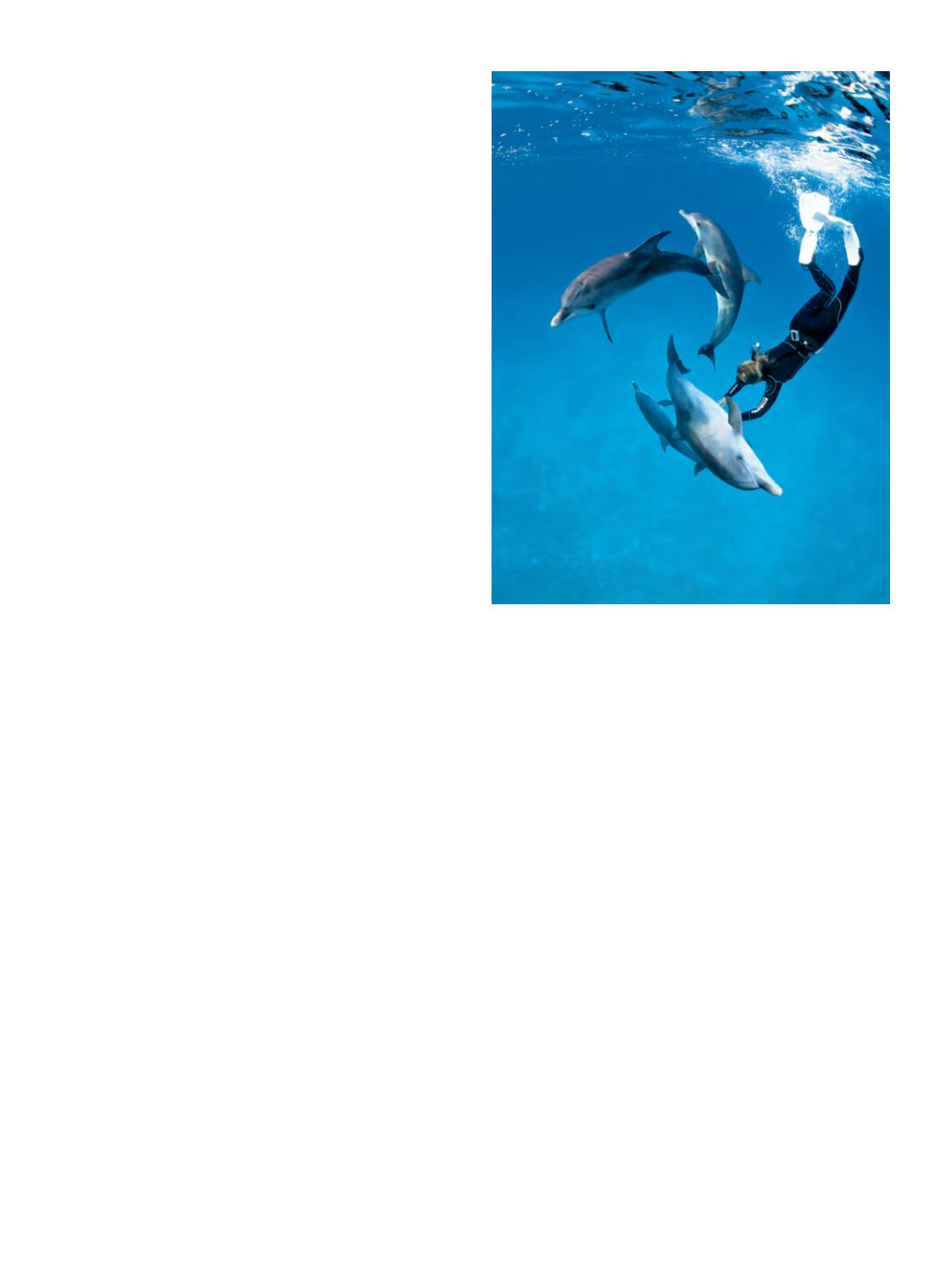
|
103
were overly monochromatic without strobe, I felt that
shooting available light was the best solution.
However, with the humpback whales in Tonga I
sometimes found the strobe to be an advantage. The
whales had brilliant white coloration on their sides,
and the strobe helped with contrast, particularly
with deep or backlit animals. The task was to find
a strobe small enough yet powerful enough to do
the job. Typically I would work at quarter power
so I had a rapid recycle that could keep up with my
motordrive for bursts of 10 frames per second, but
to be effective that required proximity to the whale.
The whale largely controlled that, and a friendly whale
might benefit from strobe lighting. This is another
risk/reward scenario: If the whale is too far away, the
strobe will offer no optical benefit and will contribute
water resistance. Bulky, buoyant strobe arms used
to minimize wrist fatigue while scuba diving are the
wrong solution for freedive photography because of
their negative impact on hydrodynamics.
SHALLOW WATER SEASCAPES
AND OVER/UNDERS
In much of the available-light work I do while
freediving I find that bracketing with strobe power
and shutter speed (like I might do on scuba) isn’t
particularly productive. In high ambient light at the
surface it is sometimes hard to see the LED numbers
that show camera settings and meter reading, and
things happen so quickly on a single breath of air that a
bit of camera automation is a relief. For this I find that
the automatic setting in shutter-speed priority serves
me well. I might dial in a bit of exposure compensation
if my subjects are coming out consistently over- or
underexposed. Even with strobe light I find this
generally works quite well as my strobe power is set so
low (to achieve rapid recycle) that it rarely overpowers
the aperture required for the chosen shutter speed. If I
bracket at all, it is likely with strobe power.
I had an issue with this protocol recently, however,
while shooting snorkelers with spotted dolphins in the
Bahamas. In the late afternoon, shooting with a shutter
speed of 1/160 second to stop the action gave me an
aperture of about f/8 for the ambient light. Working at
25 percent power on the strobe and ISO 320 gave me
consistently good exposures. But as it got closer to dusk,
the ambient light dropped and required f/4. Depth of
field suffered, and the strobe would often overpower the
foreground subject (typically the dolphin). My solution
was to kick up the ISO to 640 and cut the strobe power
to 12 percent, which brought the apertures back to f/5.6
or f/8 and provided exposures appropriate for marine
life two to three feet away.
With over/unders or shallow coral-reef photography,
shutter-speed priority with the sun to your back is
generally a reliable way to shoot. If I want more color
on a foreground subject or to light the inside of a
model’s mask, I will add a strobe to the toolkit.
A FINAL TIP
There is nothing worse than freediving into a once-in-
a-lifetime marine-life encounter and taking a few shots
only to have your data buffer load up. It won’t take
many instances of feeling like your lungs are bursting
while you wait for the buffer to clear so you can shoot
just a few more frames before you figure out that the
$20 secure digital card you bought at Office Depot is
not the right tool for the job. You’ll want the fastest and
most efficient media you can buy.
With freedive photography you need to put it all
together: mental and physical fitness, streamlined photo
equipment, hydrodynamic water wear, optimal photo
technique and a beautiful shallow reef or some other
propitious environment for encountering significant
marine life.
AD
With marine life that moves very quickly, like these spotted
dolphins off Bimini, a strobe that recycles very rapidly is an
advantage.
STEPHEN FRINK


